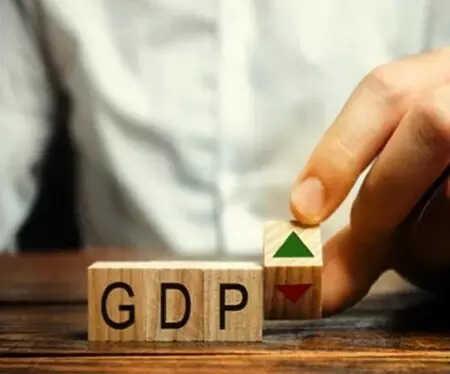Union Bank of India (UBI) projects India’s current account deficit (CAD) may face pressure in FY25 due to rising global crude prices. A $10 increase per barrel could worsen the CAD by $15 billion annually. While maintaining a 0.9% of GDP forecast for FY25, UBI cautions that geopolitical tensions and commodity prices, especially oil, pose risks.
Oil Prices on the Rise: Are We Headed for Economic Turbulence?
Okay, let’s talk oil. Not the kind that makes your skin glow (though that’s important too!), but the black gold that keeps our world humming – and sometimes throws a wrench in the gears. Lately, that wrench seems to be tightening.
You see, global crude oil prices are doing their impression of a rocket, heading skyward faster than Elon Musk’s latest ambitions. And while a few extra dollars at the pump might sting, the bigger picture is what’s really concerning economists and policymakers. We’re talking about India’s Current Account Deficit, or CAD, and how these rising oil prices are threatening to blow it wider than expected.
Now, for those not fluent in economics jargon, the CAD is essentially the difference between how much money flows into India from exports and investments versus how much flows out for imports and other payments. A manageable CAD is generally considered healthy, signifying a growing economy. But a widening one? That’s a red flag, indicating we’re spending more than we’re earning as a nation.
And oil, well, oil is a massive import for India. We’re heavily reliant on foreign sources to fuel our growth. This dependency makes us particularly vulnerable to price fluctuations in the international market.
United Bank of India (UBI) recently released a statement highlighting this very point. Their analysis suggests that for every $10 rise in the price of crude oil, India’s CAD could balloon by a staggering $15 billion. Let that sink in for a moment. That’s a whole lot of extra strain on our economy.
What’s worse, UBI projects that if oil prices continue on their current trajectory, India’s CAD for the fiscal year 2026 could reach 1.2% of GDP. That’s not a catastrophic number by any means, but it’s definitely a cause for concern, especially considering the government’s efforts to keep it lower. A higher CAD puts pressure on the rupee, potentially leading to inflation and making imports even more expensive – a vicious cycle, really.
So, what’s driving this surge in oil prices? It’s a complex mix of factors. Geopolitical tensions in key oil-producing regions are certainly playing a significant role. The ongoing conflict in Ukraine and instability in the Middle East create uncertainty and disrupt supply chains. This uncertainty, naturally, translates to higher prices.
OPEC+, the group of oil-producing nations led by Saudi Arabia and Russia, is also a major player. Their decisions on production levels have a direct impact on global supply and demand. Recent production cuts announced by OPEC+ have contributed to the upward pressure on prices.
But it’s not just about supply. Demand is also a factor. As the global economy recovers (albeit unevenly) from the pandemic, the appetite for oil is increasing. Emerging economies, like India and China, are driving a significant portion of this demand.
The big question now is: what can be done? There’s no magic bullet, unfortunately. The government has a few options, but each comes with its own set of challenges.
One approach is to diversify our energy sources. Increasing investment in renewable energy – solar, wind, hydro – is crucial for long-term energy security and reducing our dependence on oil. This is a marathon, not a sprint, but every step in that direction helps.
Another option is to promote energy efficiency. Encouraging businesses and individuals to adopt more efficient practices can help curb demand and reduce our overall consumption. Simple things like using public transportation, switching to energy-efficient appliances, and promoting better insulation in buildings can collectively make a difference.
Finally, the government can explore diplomatic efforts to stabilize oil prices. Engaging with OPEC+ and other key players to promote responsible production policies can help mitigate price volatility.
Of course, these are just broad strategies. The devil is always in the details. Implementing these policies effectively requires careful planning, strategic investments, and a willingness to make tough choices.
And let’s be honest, some of this is simply beyond our control. Global events and OPEC+ decisions are largely outside of India’s influence. But that doesn’t mean we should sit back and do nothing. By focusing on what we can control – diversifying our energy sources, promoting efficiency, and engaging in proactive diplomacy – we can better navigate the choppy waters of the global oil market.
The coming months will be crucial. Monitoring oil prices and their impact on the CAD will be essential. Let’s hope that a combination of strategic policies and a bit of good luck will help us weather this storm and keep India’s economic engine running smoothly. Because nobody wants to feel the economic pinch – especially when we’re all striving for a brighter, more prosperous future.







